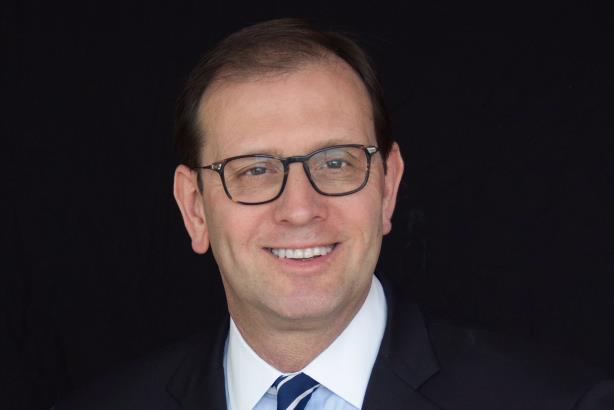A quick overview of product roadmaps, not only for product managers.
Briefly, What Is A Product Roadmap?
A product roadmap is a visual representation that outlines a product development and evolution over a defined period, serving as a communication tool to align stakeholders around the product’s direction, goals, and milestones.
In general terms, the roadmap communicates where the product is headed, outlining its strategic direction. It clarifies the goals the product aims to achieve, whether those are related to user experience, market share, revenue, or other metrics. Key milestones, which are significant achievements or upcoming features or events, are also highlighted to provide a sense of progress. A product roadmap is a necessary piece in a solid product strategy.
Why Are Product Roadmaps Important?
The product roadmap is a must-have planning document that clearly delineates a product’s journey, purpose, priorities, and timeline. This document is of paramount importance for product management in ensuring that all stakeholders make informed decisions and are aligned with customer needs and market trends.
It is an absolute must-have for any successful product launch and proves an indispensable tool in later product development.
What Do You Need A Product Roadmap For
Creating a product roadmap can bring significant benefits to a company developing a new product. One key benefit is feature prioritization. A well-defined roadmap can help both the development team and the product manager emphasize the essential features that align with the product vision and business goals.
This helps avoid scope creep, reduces unnecessary work, and ensures that defined features are delivered on time. Feature prioritization is also beneficial in optimizing customer needs and building a better user experience and helps in staying in line with the product strategy during the development process.
Another advantage of a product roadmap is stakeholder alignment. A product roadmap allows all stakeholders to have a shared understanding of the product’s priorities and direction. This shared understanding helps align cross-functional teams, product owners, executives, and developers.
When all stakeholders have the same information, everyone can focus on achieving common goals. Additionally, stakeholder alignment also reduces the risk of misunderstandings and helps to build trust among team members.
Creating a product roadmap also ensures effective release planning and customer communication. A roadmap provides a clear overview of what customers can expect from the product, and when. It helps create transparency and fosters customer relations.
Also, it enables the product team to plan product releases effectively, thus reducing the risk of delays, helping to meet customer expectations, and ultimately contributing to the overall success of the product.
By creating an actionable plan for releases and communicating it to customers in advance, companies can keep customers engaged and loyal.
How To Organize Your Roadmap
On the technical side, your project will need to align the type of roadmap you use to its array of available solutions. These mostly include the type of project management software in use and the applied project management methodology, but deciding factors can come down to the environment the development team is working in, so consideration is key.
The choice of whether to use a given roadmap format depends on the specific needs and context of the product, organization, and stakeholders involved. Remember that it mostly serves the function of presenting the product vision in a comprehensible way, so the above considerations will help you decide what suits that need best.
Public Roadmap or A Team Tool?
A business should have a public product roadmap when it aims to enhance transparency, foster customer engagement, and manage expectations effectively by sharing its up-to-date product plans, milestones, and features with customers, stakeholders, and the broader community.
Public availability facilitates quick customer feedback and allows for streamlining feature requests. This builds trust and demonstrates a commitment to delivering value and innovation.
An internal product roadmap is a strategic blueprint that outlines the development trajectory, feature priorities, and milestones of a product. It helps align cross-functional teams, enables effective resource allocation, fosters communication, and enables coordinated efforts toward shared goals.
Roadmap Types As Organized With Time
A dated roadmap, also called a time-based roadmap, outlines milestones and deliverables with specific timelines. It provides a clear schedule for planned initiatives. This roadmap helps stakeholders understand project sequence and timing.
In contrast, a not-dated roadmap, or theme-based roadmap, lacks specific timelines. It focuses on high-level themes, goals, or initiatives without fixed time frames. This approach suits uncertain timing or long-term vision. Some startups might decide on that format to draw focus to their idea of the product and later make it more specific once it gains financing and more stakeholders.
A hybrid roadmap presentation combines dated and not-dated elements. It offers specific timelines for some items while presenting other themes without set dates. This approach balances clarity and adaptability even in a constantly shifting environment.
5 Product Roadmap Examples To Paint A Picture
Let’s look at these five companies’ approaches to presenting overarching business goals.
ClickUp
ClickUp is a cloud-based productivity and management software platform. It is specifically designed to assist teams and individuals in organizing tasks, projects, documents, and communications all in one convenient location.
It provides a wide range of features such as task management, goal tracking, document storage, time tracking, collaboration tools, and customizable workflows to help streamline your workflow and enhance productivity.
ClickUp offers a very down-to-earth roadmap overview presented either as a series of release notes or highlighted introduced features. Visitors can also vote on features introduced in future releases.
Simple Analytics
This company takes the noble task of presenting a more private and unified approach to browsing data analysis. Staying true to the simplicity in their name, their presentation is also designed with minimalism in mind.
Simple Analytic’s roadmap is a sort of vertical Kanban that presents tasks grouped into progress, planned, implemented, and roadmap. The first three groups are limited to several positions, whereas the roadmap itself is a long list of requested changes.
With a customer-facing approach, Simple Analytics allows users to not only one-up new features but also discuss them on dedicated user feedback portal pages
Teamwork
As a powerhouse of comprehensive project management tools, Teamwork has a lot of specific features to track across its distinctive modules. However, their approach to showcasing their product roadmaps for each module is clear and convincing.
The singular view offers a mix of changes in progress and a list of those recently introduced. That is available both for Teamwork as a whole and for each and every sub-product. What’s more, there’s a list of global updates that talk more specifically about the benefits of recent offerings.
Github
This platform needs no introduction – the main source of information for every information technology expert.
The chosen roadmap form shows multiple categories at once divided into quarters of years. It’s still easy to find specific updates and features because of several view modes and extensive filtering. This helps to expound the high-level planning that goes into the development and maintenance of the platform.
Angular
For a final product roadmap example, a widely used front-end framework for building complex web applications, single-page applications (SPAs), and other dynamic user interfaces. It’s maintained by Google and kept open-source.
Keeping to the old school, Angular’s product roadmap is presented in simple text and a blogpost article format. Given the context of the framework, it’s a helpful way of providing information that is easily browsed for specific terms.
Basic Product Roadmap Example Template
Sometimes it’s easier to start with guidelines. Even if, after reading a product roadmap example from the list above, you’re not sure how to set your own roadmap in print, the template below will help you get your bearings.
Title: Usually, something like a “Product Name Roadmap” is enough, but no one says you can’t get creative with it!
Duration: [Start Date] – [End Date]
Vision and Goals: Clearly state the overarching vision and high-level goals for the product.
Themes: Give a list of themes with descriptions and key initiatives or features related to it.
Quarterly Milestones: List all the yearly quarters for the foreseeable duration of the project, best with starts and end dates (because everyone’s definition of a quarter might differ). Then, under the quarters, list the key milestones with descriptions and associated sub-projects and initiatives.
Key Performance Indicators (KPIs): Listing this will be a signal for how you want to measure the success of the plan.
Dependencies: Dependencies indicate that the completion of one task or milestone is reliant on the completion of another task or milestone. In other words, certain activities need to be finished before others can begin, or there’s a logical order in which things must happen.
Potential Risks: Depending on the transparency of the whole endeavor this might be the level of detail more suitable for internal stakeholders.
Notes: Any additional info you need or want to include to complete the overview.














 +1 (888)
413 3806
+1 (888)
413 3806